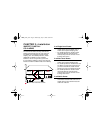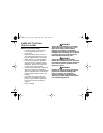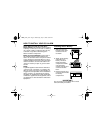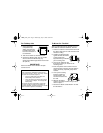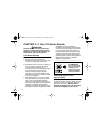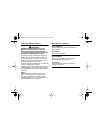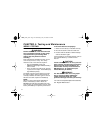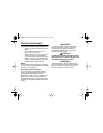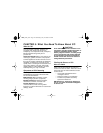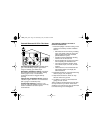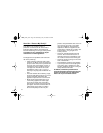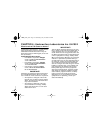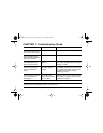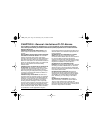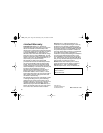
14
CHAPTER 5:
What You Need To Know About CO
What is CO?
CO is an invisible, odorless, tasteless gas
produced when fossil fuels do not burn
completely, or are exposed to heat (usually fire).
Electrical appliances typically do not
produce CO.
These fuels include:
Wood, coal, charcoal, oil,
natural gas, gasoline, kerosene, and propane.
Common appliances are often sources of CO. If
they are not properly maintained, are improperly
ventilated, or malfunction, CO levels can rise
quickly. CO is a real danger now that homes are
more energy efficient. “Air-tight” homes with
added insulation, sealed windows, and other
weatherproofing can “trap” CO inside.
Symptoms of CO Poisoning
These symptoms are related to CO
POISONING and should be discussed with
ALL household members.
Mild Exposure
Slight headache, nausea,
vomiting, fatigue (“flu-like” symptoms).
Medium Exposure
Throbbing headache,
drowsiness, confusion, fast heart rate.
Extreme Exposure
Convulsions,
unconsciousness, heart and lung failure.
Exposure to Carbon Monoxide can cause brain
damage, death.
CAUTION!
Some individuals are more sensitive to CO
than others, including people with cardiac or
respiratory problems, infants, unborn
babies, pregnant mothers, or elderly people
can be more quickly and severely affected
by CO. Members of sensitive populations
should consult their doctors for advice on
taking additional precautions.
Finding the Source of CO
After an Alarm
Carbon monoxide is an odorless, invisible gas,
which often makes it difficult to locate the
source of CO after an alarm. These are a few of
the factors that can make it difficult to locate
sources of CO:
• House well ventilated before the
investigator arrives.
• Problem caused by “backdrafting.”
• Transient CO problem caused by
special circumstances.
BRK Brands, Inc. shall not be obligated to
pay for any carbon monoxide investigation
or service call.
M06_1042_001.E Page 14 Wednesday, July 12, 2000 9:26 AM



